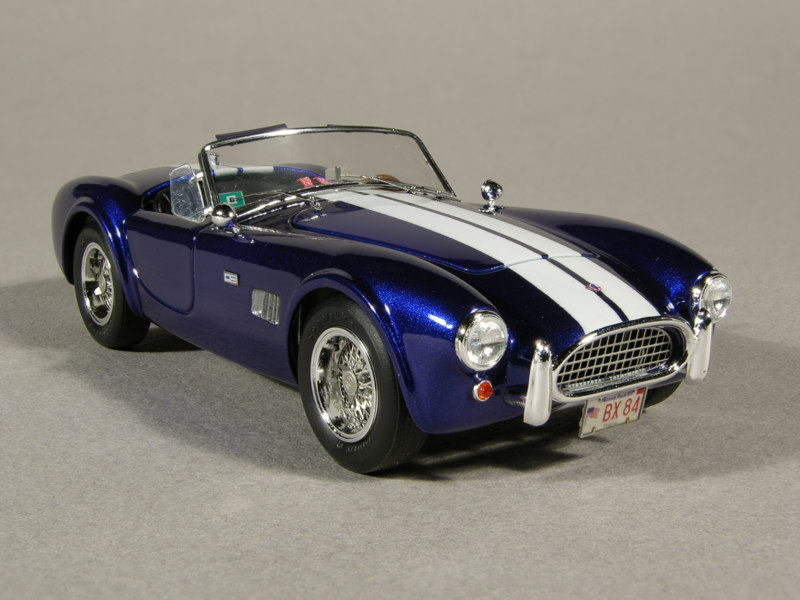-
Posts
9,227 -
Joined
-
Last visited
Content Type
Profiles
Forums
Events
Gallery
Everything posted by peteski
-

To err is human? Some are uncorrectable.
peteski replied to bonehead23's topic in How To Use This Board
Yes, the forum has a list of "naughty" words and it scans your post for them before it gets posted, automatically replacing them with BLAH, BLAH, BLAH thing. It's kind of silly, but it is not my forum. I also agree that some of the "naughty" words are IMO not all that "naughty" and should be allowed. that "C" word mentioned is one of them. -

Paint Strippers - What to Use?
peteski replied to pbj59's topic in Model Building Questions and Answers
Interesting. . . Now to find the indgredients list. EDIT: looks like I found it: https://www.livestrong.com/article/166094-dettol-antiseptic-ingredients/ Ingredients in Dettol Antiseptic Active ingredient: Chloroxylenol BP (antiseptic, disinfectant) Isopropyl alcohol (antiseptic) Pine oil Castor oil soap Caramel coloring Water I wonder if it is the Isopropyl Alcohol that is doing most of the paint removing work? After all, Many people have success using it for removing Tamiya spray paints (lacquers). -

Paint Strippers - What to Use?
peteski replied to pbj59's topic in Model Building Questions and Answers
This is likely not available in USA. What do you think would be the equivalent here in the States? -

Airbrushing & Conditions
peteski replied to 70 Sting's topic in Model Building Questions and Answers
I have to disagree with you Pete about just "some moisture". Any air-conditioning unit (windows or central AC at home, or a car AC) remove quite a bit of moisture from the air. That is why the older windows AC units dripped water on the outside, and a car AC drips water onto the street. Newer window AC units don't drip because the moisture condensed on the evaporator side gets splashed on the condenser side (evaporative cooling) to make the AC units more efficient. Further proof is that dehumidifiers are basically same construction as a window AC unit, except the evaporator and condenser coils are placed back-to-back. When the ambient air is first forced to travel through the cold evaporator, the moisture condenses on it. Then the cooled (but dry) air travels through the warm condenser coils, warming it to slightly above room temperature. While you are correct that AC does not remove all the moisture, it removes much more than just some moisture. I have a window AC in my bedroom and also a hygrometer. In my area summers can get quite muggy (dew point in the mid-70s). When the AC compressor cycles on and off, I can see the swing in relative humidity. Of course for the AC to remove moisture out of the air, that moisture has to be there in the first place. In a desert climate, where the air is hot and dry, the dew point is low, and there is very little moisture to be removed. So in that climate, AC does mostly just cool the air. But in areas where the ambient air is hot and very humid (like the summers where I live), the dew point is high, and AC sucks a lot of moisture from the air. -
Nicely built model of a very handsome truck! What model kit is it? What scale?
-

Airbrushing & Conditions
peteski replied to 70 Sting's topic in Model Building Questions and Answers
Createx and craft paint are water-based paints. IMO, water (dew) will not affect them since water is the paint's solvent anyway. You can safely ignore all the confusing info. Happy airbrushing! -
MEOW! I did thank you for the info. As for my "rant", if you want to dissect it, the entire post only contained 5 sentences, and the info you missed was in the 3rd one (which you supposedly read). Maybe those sentences were too long? Sorry. I again thank you for the helpful info.
-
Exactly! That is why we are trying to convince the OP to just spray red over the bare orange plastic, rather than using gray primer.
-
Well Lee, that is the standard response, isn't it? But If people can gripe about too many obituary threads, I feel compelled to gripe about these pointless threads. By the same token, if you don't like my posts, don't read them. There you go. 1487184714826582618748174391319814974816585687541741943819830184048979579518799128084301328041195729579172984018240248012840915492579142908140180284012840128491577566792759809108081.001 Oops, wrong thread! Here you go: SDKFNVKSNJOHEHITRHIJWKDMDASKJPOJKWQJEOWQJRODAJOSDAJOSACMACSKLASMOMAEWOEJORJORQJODAMAOSDMOSDJCIOCHJURIHRFIHDKSALMSLMASOoajdhjdoatrojaomdalmcomjasojdosajdoasjdosajfoiasfoiashoejaweakdljmocsajaso Oh what fun that was!
-
That sounds logical when using white primer, but how about when using gray primer (that seems to be the cost-preferred primer in this thread)?
-

Airbrushing & Conditions
peteski replied to 70 Sting's topic in Model Building Questions and Answers
The dew point is the key (the temperature at which dew forms from the ambient air). See https://www.calculator.net/dew-point-calculator.html In both instances the dew point was in high 50s - low 60s. But as I mentioned, there are other things to consider (like how fast the paint's solvent evaporates, and that varies with the paint types and brands). The solvent evaporation rate is also directly dependent on the ambient air temperature -- that throws yet another wrench in the works. I don't think there is any specific magic formula (other than spraying when the dew point is in the high 50s or lower (which means the air is dry). -
So now we have 3 silly pointless threads here? What is so captivating about these that people keep on piling on replies? My response here is the same as in the numbers game: go build some models! I rather see more obituaries, or favorite music. My favorite here is the irk thread (I wonder why?).
-
Thanks Danno -- I know that and already mentioned it in my post. I also explained that my preference would be to see the actual number without hovering.
-
Well of course. If a paint system being used specifically states that it is designed as a base-coat/clear-coat then anybody using that system should follow the directions written on the can. I believe that in those paints (just like the 1:1 automotive version) the base coat will dry to a dull satin finish.
-
Would you believe that I saw what you did there?
-
Ah, they are always try to sneak in some undocumented "improvements"!
-
Actually most solid color (and even metallics) lacquer's and enamels dont' need a gloss coat, except maybe after decals are applied (to protect them). The problem is the spraying techniques used by many modelers leave the paint surface rough enough to need to use clear coats. The only paints that require gloss coats are the ones which specifically state that they do. Those are usually base-coat/top-coat metallic automotive lacquers and the paints sold as hobby paints that are simply small quantities of those automotive lacquers. Those are easily to recognize because the metallic base coat dries to an even dull satin finish. But most *GLOSS* hobby paints (such as Testors, Humbrol, Revell and others) should not require a gloss coat.
-
The post count badges (like rocket) are cute, but I'm not too crazy about the rounded up post count. I'm a visual kind of a guy and I liked seeing the actual post count displayed for each member's info (on the left of their post, under the avatar). Now we see "3k", 4k", etc. I know I can hover over that number and the actual count is displayed, but that requires me to do something extra I didn't have to do in the past. Why make things more complicated? Just show the actual number, like it was done in the past.
-

Airbrushing & Conditions
peteski replied to 70 Sting's topic in Model Building Questions and Answers
The ambient air's relative humidity (dew point) is very important factor while spray painting. The dew point value is the air temperature at which dew will form on any object that is at that temperature or lower. How many times you come out in the evening or night where you see your car (or other outdoor objects) covered with dew? How about when your cold beer, or soft drink glass/bottle/can gets covered with dew or "sweats"? That happens because those objects have temperature colder than the dew point of the ambient air. The water molecules that are in the ambient air, when in contact with the cold object turn into liquid water and form dew on those objects. That is as simple explanation as I can come up with. How does that apply to spray-painting (airbrush or aerosol cans)? When a compressed gas (propellant), depressurizes (leaves the nozzle), it cools. When you use a spray can, you can feel it getting cool during the painting session. This is due to the Joule Thompson Effect . When that cooled paint/propellant mixture hits the model's surface and its temperature is below the dew point, it will form dew on the surface of the paint, causing "blushing". It is as simple as that. EDIT: One more thing that I forgot to mention is the type of paint (or specifically the solvent or thinner) used also makes a difference. Evaporation of the solvent (once the paint is deposited on the model's surface) also causes cooling. The faster the evaporation, the more intense cooling takes place. Hot paints (usually lacquers) that dry fast, have fast evaporating solvents, and cause the most intense cooling. That evaporative cooling of the solvent adds to the moisture forming on the wet paint's surface. That is why moist (humid) ambient air is an enemy of glossy paint jobs. -
Exactly what I suggested few replies earlier (for the same reasons).
-
All Tamiya kits are really, really good. All the pars fit correctly, and they are mostly accurate. Of course many are curbside-kits, but when it is a full detail kit, nice engines are included. Some engine features might be a but simplified, but the modeler can easily add some scratch built details.
-

airbrushing nail polish
peteski replied to Paul Payne's topic in Model Building Questions and Answers
True, but it wasn't when the model was finished, and few years ago the inspection stopped inspecting model cars .




